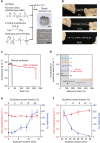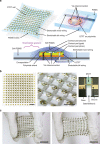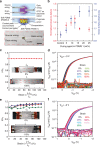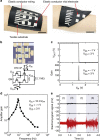Printable elastic conductors with a high conductivity for electronic textile applications
- PMID: 26109453
- PMCID: PMC4491189
- DOI: 10.1038/ncomms8461
Printable elastic conductors with a high conductivity for electronic textile applications
Abstract
The development of advanced flexible large-area electronics such as flexible displays and sensors will thrive on engineered functional ink formulations for printed electronics where the spontaneous arrangement of molecules aids the printing processes. Here we report a printable elastic conductor with a high initial conductivity of 738 S cm(-1) and a record high conductivity of 182 S cm(-1) when stretched to 215% strain. The elastic conductor ink is comprised of Ag flakes, a fluorine rubber and a fluorine surfactant. The fluorine surfactant constitutes a key component which directs the formation of surface-localized conductive networks in the printed elastic conductor, leading to a high conductivity and stretchability. We demonstrate the feasibility of our inks by fabricating a stretchable organic transistor active matrix on a rubbery stretchability-gradient substrate with unimpaired functionality when stretched to 110%, and a wearable electromyogram sensor printed onto a textile garment.
Figures





References
-
- Yu G., Gao J., Hummelen J. C., Wudl F. & Heeger A. J. Polymer photovoltaic cells: enhanced efficiencies via a network of internal donor-acceptor heterojunctions. Science 270, 1789–1791 (1995).
-
- Fukuda K. et al.. Fully-printed high-performance organic thin-film transistors and circuitry on one-micron-thick polymer films. Nat. Commun. 5, 4147 (2014). - PubMed
Publication types
LinkOut - more resources
Full Text Sources
Other Literature Sources

